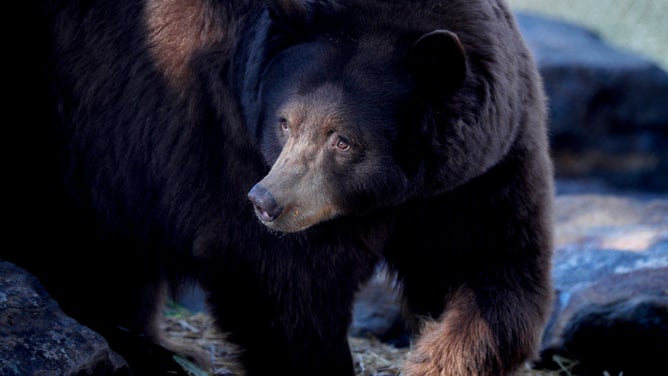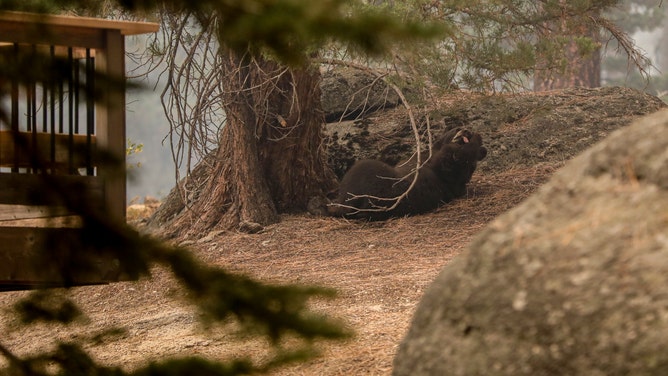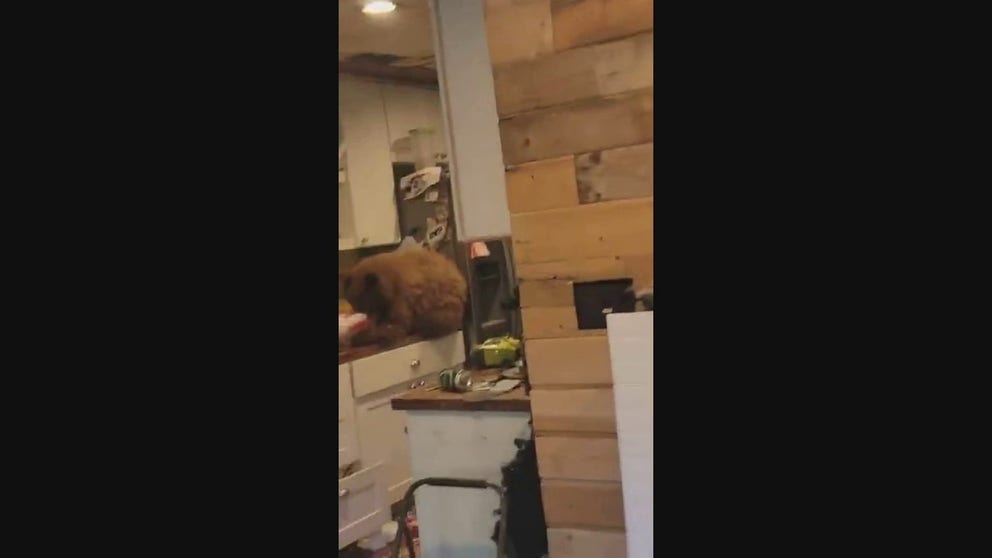Paw-lickin’ good: This bear caught breaking and entering for KFC
This homeowner has a bone to pick with this 'cub scout' who is trying to fatten up before hibernating
Bear breaks into home for a bucket of KFC
A bear broke into a home in Sierra Madre, CA to eat a bucket of fried chicken.
SIERRA MADRE, Calif. – Armed with only a cellphone, John Holden walked into his home to find it ransacked. A cub devouring a bucket of KFC sat on his kitchen counter, a sibling waited for scraps on the floor and the mother watched it all from the front steps.
Holden said he has seen a couple of bears around his Sierra Madre, California, home before, but never inside. Two days later the ursine family came back looking to score more on their bucket list.
Everything is on the menu right now, not just fast food
"Bears are much more active this time of year," said Ann Bryant, Executive Director of The Bear League (BEAR). "They are getting ready to hibernate."
BEAR is a 25-year-old organization in Lake Tahoe, California, that helps people live with bears in bear country. She said she has been taking many calls about bear break-ins on the organization’s 24-hour/ 7-day-a-week hotline.
"Right now they need to get as many calories as they can every day," Bryant said. "In the summer months, they can do just fine on 5,000 calories. But this time of year, they need to put on weight, so they can sleep for the winter. They take in 30,000 calories a day. This is what we call hyperphagia."
Their voracious appetite is matched by their sense of smell, navigation and power.
"They have a really incredible sense of smell," Bryant said. "They can smell 50 miles away. They can smell hazelnuts ripening in a field 50 miles away, tuna through a can and lasagna in a freezer miles away."
Tahoe’s black bear females preparing to gestate, need to find a home before December in order to give birth in January. Bryant said BEAR is getting calls and reports of females scavenging for den supplies that can keep mama and babies comfortable until they are ready to emerge in May.

A mother black bear
(Michael Macor/San Francisco Chronicle via Getty Images)
Bryant said juveniles usually go into hibernation sometime in December, but males don’t usually go in until after Christmas.
"They like to have the Christmas leftovers from tourists who leave their trash out," she said.
Bryant said BEAR typically fields as many as 150 calls every winter from people worried about bears hibernating under their homes. She said it is not dangerous to have a hibernating bear under the house as long as the bear doesn’t damage water and gas lines.
"Just make sure there is no crawlspace floor entry that the bears can get through when they smell you cooking dinner," she said.
Bryant said BEAR will help relocate the hibernating bear until Jan. 1. After that, she said: "You are stuck with the bear family until May when the babies are big enough."
By mid-March, males come out of hibernation. They're followed by the juveniles and families. Mom’s with newborns usually emerge in April and May.
Not all bears hibernate
Most bears hibernate but not all. Bryant said it doesn’t matter how cold or snowy the winter gets, it is all about food availability.
"Bears in communities where people put trash out have constant food," Bryant said. "(There is) no need to hibernate. They would rather stay up and eat."
More Tahoe bear sightings than usual this season
This year, BEAR has seen more bears than normal coming into Tahoe after the devastating 2021 fire season. The bear habitats were destroyed, but the towns were saved. So, people living in areas just outside the burned areas are seeing bears for the first time.
"They have low bird feeders, trash out, pet food out," Bryant said. "They are feeding the bears and the bears are thinking ‘We are friends forever.’ They are never going to leave."

MEYERS, CA - AUGUST 31: After flames from the Caldor Fire ripped through part of neighborhood, an injured black bear licks its burned paws while bedding down behind a home in Meyers, Calif, Aug. 31, 2021.
(Brontë Wittpenn/San Francisco Chronicle via Getty Images / Getty Images)
Denver is having a similar problem with grizzly bears.
There are more bear break-ins now than any other time of the year
Bears are more voracious now than after hibernation, according to Bryant.
"When they first come out everyone always says, ‘Oh! They are starving,’" she said. "Most of them are thirsty when they first come out. That’s why they try to hibernate near a stream or lake. Then, they need to get their stomach juices flowing. They start eating the new spring grasses and herbs and wildflowers. They don’t eat anything heavy at first … like a salad to start a meal."
Late spring meals consist of new blooms and the tender green tips of pine needles. Then, bears fill up on summer berries and fruits giving way to the acorns and pinecones of fall when hyperphagia starts again.
